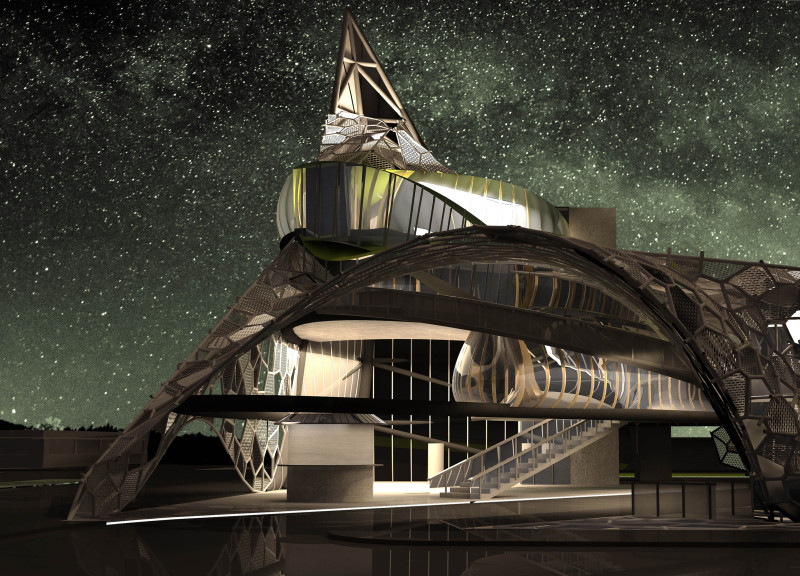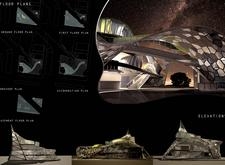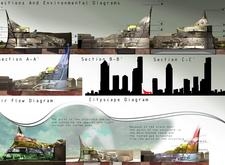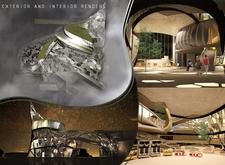5 key facts about this project
### Overview
Located in Melbourne, Australia, the Melbourne Tattoo Academy serves as an educational facility for aspiring tattoo artists while reflecting the cultural vibrancy of the city. The architectural design emphasizes a contemporary aesthetic that resonates with the art of tattooing, creating an environment that fosters creativity and artistic expression. Through careful planning and conceptualization, the building embodies not only the craft of tattooing but also the diversity and dynamism inherent within Melbourne's artistic community.
### Spatial Strategy and Community Integration
The site plan is designed to facilitate connectivity with the urban landscape, thoughtfully situating the building in relation to open green spaces. By adopting an engaging form that blends with its surroundings, the academy encourages interaction within the community. The strategic orientation of the structure optimizes natural light and utilizes prevailing winds, enhancing the building’s sustainability profile while providing a welcoming atmosphere for users.
### Materiality and Design Features
The construction employs a diverse selection of materials to achieve both aesthetic appeal and functional resilience. Glass is prominently used to enhance transparency and incorporate natural light, while steel provides the necessary structural support for fluid design forms. Concrete establishes a robust foundation, and wood adds warmth to interior spaces. The façade combines composite panels, creating a modern appearance that contributes to thermal efficiency. Noteworthy design elements include an elevated structure that offers panoramic views and additional public green space, as well as a dynamic façade that draws inspiration from tattoo patterns, which varies in appearance throughout the day. Interior spaces are designed to be versatile, accommodating workshops and communal areas that promote collaboration and creativity while prioritizing user experience through ample natural light and open layouts. Sustainability measures, such as optimized airflow and stack ventilation, further enhance the ecological mindfulness of the project.






















































